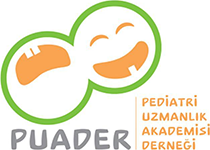Dear Editor;
A large magnitude earthquake devastated southern and central Turkey on February 6, 2023. This was one of the strongest earthquakes ever recorded in our country, causing severe damage in 11 provinces and affecting roughly 16% of Turkey's population.
Aside from structural collapse and the resulting injuries, such as crush syndrome and seismic activity, and following aftershocks may also cause panic condition in which caregivers rush to hold their little children and promptly attempt to flee the building. During this rush out, the risk of accidents and falls increases, especially if someone is carrying an infant. When attempting to flee the earthquake, one may experience knockdowns and drop the infant.
According to the literature, falls have emerged as the most common mechanism leading to head injuries in children assessed in emergency rooms, with up to 80% of such injuries happening in infants under the age of two (1). Notably, a considerable number of these falls are the consequence of caregivers unintentionally dropping the infant (1).
Head injuries are a significant reason for children to present to the emergency department, accounting for around 25% of all presentations. It is important to note that the mechanism of head injury differs between children under and over two years of age. Fortunately, the majority of children who report head injuries do not have any underlying skull fractures or brain damage; however, it is absolutely crucial to identify those infants who have sustained closed head injuries (2). Closed head injuries, unlike visible injuries, cannot be successfully diagnosed through visual inspection alone. Furthermore, assessing the possibility of an underlying closed head injury in children under the age of two presents significant hurdles when the child is unable to communicate verbally (3). Except in situations involving hematomas, these youngsters often do not exhibit clear signs or symptoms of injury, such as changed mental status. It is important to note that typical symptoms observed in adults and older children with underlying closed head injuries, such as sleepiness, nausea, vomiting, and behavioral changes, can be within the range of normal signs for children under the age of two years (5).
To summarize, in addition to increasing our overall preparedness for an earthquake by enacting proper national regulations, it is critical for individuals to remember the drop, cover, and hold on safety rules and not rush out to flee the earthquake. Parents should be reminded that the danger of baby falls may increase during panic evacuation. Physicians should recognize that the mechanism of head injury changes in children under the age of two and can manifest without conventional clinical signs.


